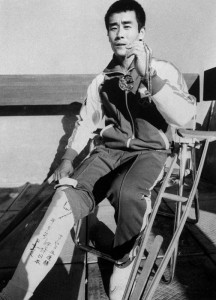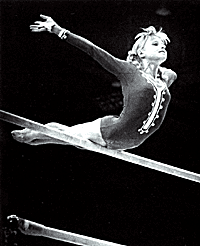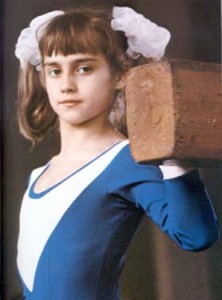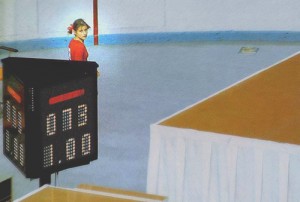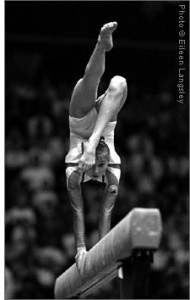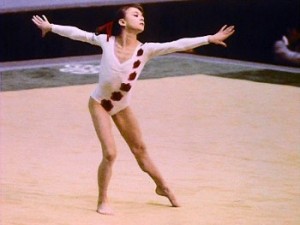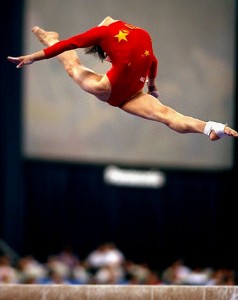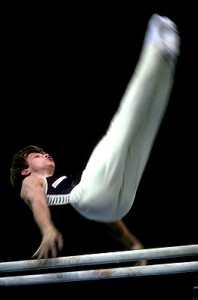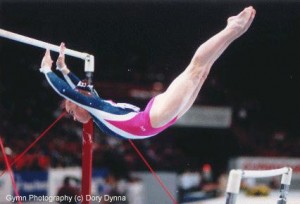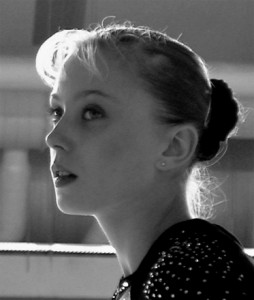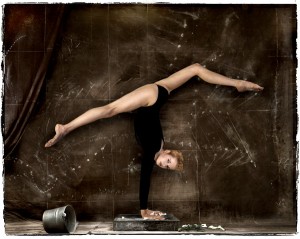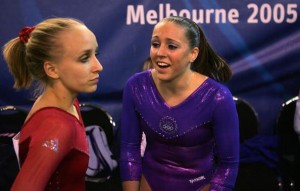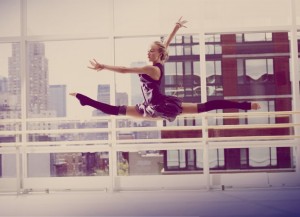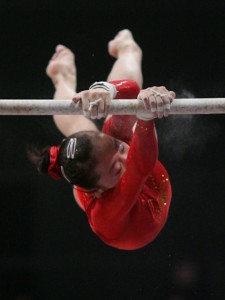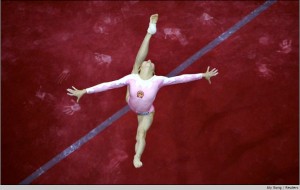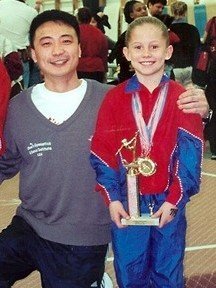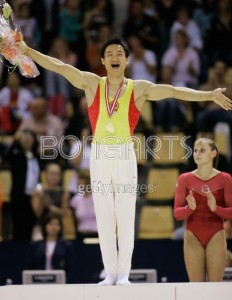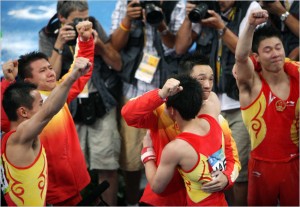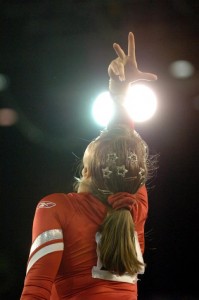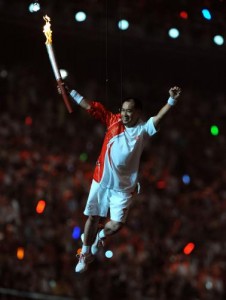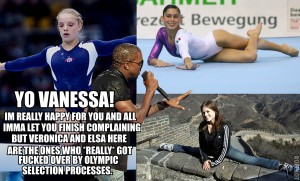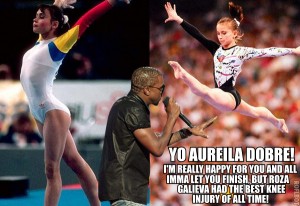Uchimura and Mustafina Win Worlds!
Another World Championships has come and gone, and all is right with the (gymnastics) world! The Russian ladies (Ksenia Afanasyeva, Anna Dementieva, Yekaterina Kurbatova, Aliya Mustafina, Tatiana Nabieva, Ksenia Semyonova) finally won the team gold for the first time since the collapse of the Soviet Union. It’s hard to believe it took them 18 years to stand atop the podium, especially thinking back to the 2000 Olympic team that was jam packed with so many heavy hitters: Svetlana Khorkina, Yelena Produnova, Yelena Zamolodchikova and Yekaterina Lobaznyuk. Mustafina undoubtedly played a huge role in their win, with incredible scores on all four events. The question loomed: could she sweep all six golds?
On the men’s side, the Chinese team (Chen Yibing, Feng Zhe, Lu Bo, Teng Haibin, Yan Mingyong, Zhang Chenglong) reigned victorious once again! I was pleased to see Teng back in top form after injuries, having put his troubles from the 2004 Olympic Games behind him. They managed to stay ahead of an elegant Japanese team and a surging German team led by Philipp Boy.
The FIG has put together some amazing montages that capture the excitement in Ahoy Rotterdam.
Women’s Team Final, 2010 World Championships
Men’s Team Final, 2010 World Championships
Defending champion Kohei Uchimura (JPN) and new senior Aliya Mustafina (RUS) dominated every phase of the competition and rightfully ended up with the All Around crowns. They both showed unwavering confidence and flashes of brilliance. Uchimura is only the second gymnast in history to defend the World title, but at this rate it seems the entire quadrennium must surely belong to him! He defeated silver medalist Philipp Boy (GER) by a whopping 2.283. American Jonathan Horton grabbed the bronze medal by just 0.033 over Ukrainian Mykola Kuksenkov.
Kohei Uchimura (JPN), All Around, 2010 World Championships
Perfect gymnastics alert! Just about everything he does is textbook perfect, with added flair and cool confidence. I don’t even know what young gymnasts should study most…the triple twist at 1:12, the Yurchenko-2.5 at 4:50 or the gorgeous Kovacs that opens to vertical at 7:38.
The women’s all around medals were more cut and dried; Mustafina won by 1.034 over Jiang Yuyuan (CHN) and Rebecca Bross (USA) was another point behind in the bronze medal position.
Aliya Mustafina (RUS), Vault, Apparatus Finals, 2010 World Championships
Aliya Mustafina (RUS), Uneven Bars, Qualifications, 2010 World Championships
Aliya Mustafina (RUS), Balance Beam, All Around, 2010 World Championships
Aliya Mustafina (RUS), Floor Exercise, Apparatus Finals, 2010 World Championships
This routine is one beautiful element after another. She gets so much height on her Arabian double front, and her triple turn is amazing. I love the little piece of choreography starting at 1:03 and leading into the final tumbling pass. That little step out of bounds after the triple twist was Mustafina’s second largest error in 16 routines. Not bad for a newbie!
This hauntingly lovely music, Hijo de le luna, has been in my head ever since she first performed in the preliminary round! I’m not sure how I feel about floor music with vocals but this is the perfect music for Mustafina, worthy of a world champion.
I’ll highlight the apparatus winners next time, but for now I’d like to pay homage to a wonderful coach, Boris Pilkin. When national team coaches told him he was wasting his time, doubting that the tall Khorkina could achieve much success, Pilkin stood by his protégée and turned her into one of the best gymnasts ever. His ability to teach proper technique and to invent new skills allowed Khorkina to be celebrated in the international spotlight for an entire decade, winning numerous Olympic and World medals for Mother Russia. He passed away in the night at the age of 82, just hours after watching the Russian women claim their first gold medal.
Posted in News | 3 Comments »

